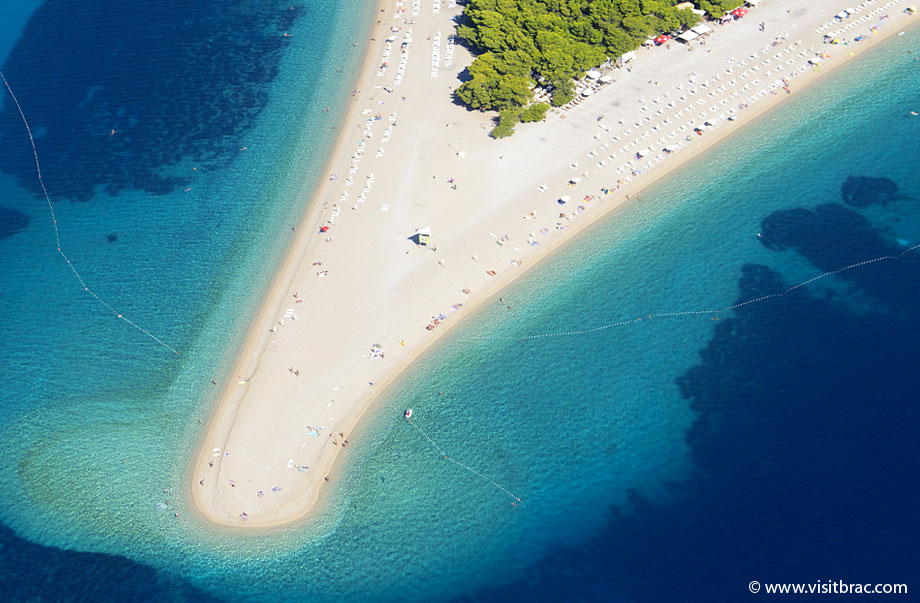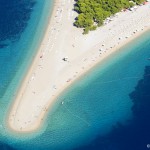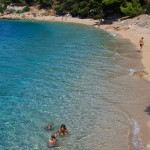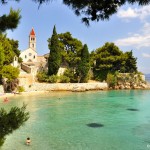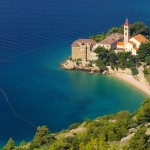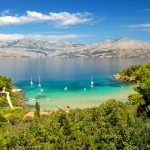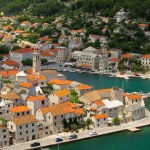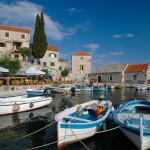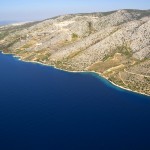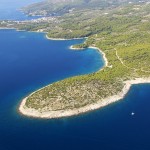Brac, the largest island of the central Dalmatian group of islands, the third largest among the Adriatic islands; area 394.57 sq km; population 13,824. It is separated from the mainland by the Brac Channel, from the island of Solta by the so-called Splitska Vrata (Split Gate) and from the island of Hvar by the Hvar Channel.
The highest peak of the island, Vidova Gora (Vitus’ Mount) (778 m), is also the highest peak of all Croatian islands. The limestone part of the coast is rocky and steep, while the rest is rather low and sandy (on the southern side from Farska to Bol, and on the northern side from Sutivan to Supetar). The island landscape is dominated by a karst limestone relief, with numerous gullies, crevices, cavities, round valleys and coves. Milder forms of the relief, with brown Primorje soils (the most fertile on the island), are found mostly in the interior (especially between Lozisca and Nerezisca, as well as between Selca, Novo Selo and Sumartin).
Average air temperatures in January range between 4.9°C (Praznice) and 7.2 °C (Sutivan), and in July between 22.9 °C (Nerezisca, elevation 360 m) and 24.7 °C (Sutivan). Rainfall occurs mostly in the winter months. The annual rainfall in Praznice reaches 1,450 mm and in Sutivan about 830 mm. The climate on the island is mostly moderated by winds, i.e. the sirocco and the bora (the so-called “vruljska” bora between Pucisca and Povlja). The landward breeze occurs quite often in the summer months, especially along the north-western coast. There are no surface water streams on the island. Permanent water sources are provided only around Bol.
Higher parts of the island (above 400 m) are at some places covered with black and Aleppo pine forests; larger or smaller forests of Aleppo pine are found around all coastal towns and villages; dominant are dense evergreen underbrush (macchia) and rocky ground. The largest places are Pucisca and Supetar. Major farming products are olive oil, wine and fruit (sour cherries and almonds); chief occupations include also livestock breeding and fishing. Fish canneries are located in Postira and Milna. Major quarries, where the famous Brac building stone is excavated, are located near Pucisca, Selca, Postira, Splitska and Do-nji Humac (this kind of building stone was used in the construction of the White House in Washington and the Palace of Diocletian in Split). A road network has been constructed throughout the island; ferry lines Split – Supetar, Makarska – Sumartin; ship lines with Supetar and Bol. Airport (for smaller aircraft) above Bol.
Brac was inhabited as early as the Neolithic (Kopacina Cave between Donji Humac and Supetar), featuring also the archaeological sites from the Bronze and Iron Ages (hill-forts Rat near Lozisca, Kastilo above Bol, Skrip – as the major fortification, Velo and Malo Gradisce, Hum, Gradac, tumuli in the vicinity of Nerezisca, Praznice, Gornji and Donji Humac and elsewhere) and from the period of Greek colonization (Vicja Vala). The first known settlers were the Illyrians (the ancient name of Brac, Brattia, most probably originates from the Illyrian word brentos: deer).
The Roman period has also left many traces (summer mansions, tombs) not only in the interior of the islands but also on the coast; the quarries near Skrip were exploited already during Diocletian’s reign. In the early Middle Ages Brac came under Byzant, to be taken by the Slavs from the Neretva region in the 9th century, upon which it was annexed to the Croatian state. Due to a constant threat of the pirates, the population gradually abandoned its coastal habitations and withdrew to the interior of the island (Nerezisca, Donji Humac, Skrip, Gornji Humac, Podhume, Gradac, etc.). In the 18th century Brac was under the rule of the town of Omis, to come under the town of Split in 1240; in the 14th century Brac acknowledged the rule of the Hungarian-Croatian king Louis I, then the Bosnian king Tvrtko I and Duke Hrvoje Vukcic, having being granted broad autonomy. In the period 1420-1797 Brac was under the Venetians, who confirmed the earlier privileges of Brac. After the fall of Venice it came under Austria (until 1806); for a short period of time it was also the Russian marine base for the northern part of the Adriatic, after that it was under the French rule and then until 1918 under Austria.
Some ten sanctuaries date back to the early Christian times (the three-foil church in Sutivan, the three-nave basilica with the baptistery in Povlja and Postira, Supetar). The first churches in pre-Romanesque style appeared in the 10th century (St. Nicholas above Sumartin, St. Michael above Dol); after that sacral buildings started to follow the styles of the development of the Croatian architecture with Romanesque features (St. George above Brac, St. Elias near Donji Humac). The 15th century was characterized by more complex architectural forms (a summer mansion in Bol) and the Renaissance order was applied in the construction of the church in Postira and the Dominican church in Bol. The Baroque-style architecture saw its best moments in the construction of churches (skrip, Lozisca, Milna, Nerezisca). The high level of architectural design was maintained in the 19th century as well (Lozisca – bell tower, church in Selca). The construction in the 20th century consisted mainly in a number of accommodation and other tourist facilities (Bol, Supetar), including also rest homes (Povlja, Bobovisca, Splitska).
Source: Leksikografski zavod “Miroslav Krleža”, Hrvatska turistička zajednica

